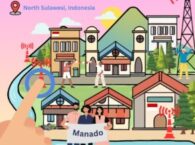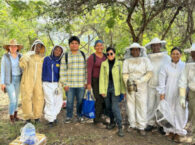Montana State University students evaluate storm sewer infrastructure challenges in Bozeman
Engineering students analyze the condition of municipal stormwater pipe system and recommend rehabilitation strategies
Metrics
Community
Bozman, MontanaUniversity
Montana State UniversityProgram
Community Engaged and Transformational Scholarship (CATS)Years
2018-2020Case Type
Project StoriesDiscipline
Environmental EngineeringRegion
EPA Region 8, USALocated in southern Montana, the City of Bozeman is home to approximately 50,000 people. The Gallatin County seat offers a thriving arts scene, cultural festivals, farmers’ markets, and excellent outdoor recreation in nearby Paradise Valley, Yellowstone National Park, and the Gallatin Mountains. Local officials and residents value a sustainable, equitable, and participatory approach to community planning across a range of focus areas.
City plans necessary improvements to stormwater infrastructure
The Bozeman Stormwater Program is in the midst of a fifteen-year-long storm sewer rehabilitation initiative. Four of the fourteen miles of aging pipes had been repaired during routine water main and sewer replacements. The remaining rehabilitation effort, however, will have to be completed separately. Officials sought technical guidance for pipe rehabilitation at two sites––the Downtown Trunk Line and South Willson Avenue.
Students weigh the risks and rewards of available technologies
Bozeman officials partnered with Montana State University students through the Community Engaged and Transformational Scholarship (CATS) initiative. Students in an Environmental Engineering 436: Stormwater Management and Engineering course were asked to analyze pipe rehabilitation strategies and produce a memo providing technical guidance. Participants reviewed eight different pipe rehabilitation methods. They considered design, environmental impact, and cost estimates for each and worked collaboratively to translate their findings into a technical memo.
Sewer solutions engineered for affordability and longevity
The final two-part memo provides a thorough overview of storm sewer technology alongside technical guidance, best management practices, and feasibility analyses for pipe rehabilitation at both sites. The proposed solutions have the potential to extend the lifespan of Bozeman’s storm sewer infrastructure by up to 75 years. Students ultimately recommended a different method for each site––“cured-in-place” rehabilitation at the Downtown Trunk line and “pipe bursting” for the South Willson line.
Repairing and replacing aging infrastructure is a daunting and expensive task for any municipality. The student engineers who collaborated on this memo helped officials from Bozeman’s Stormwater Program formulate efficient and economical decisions.


